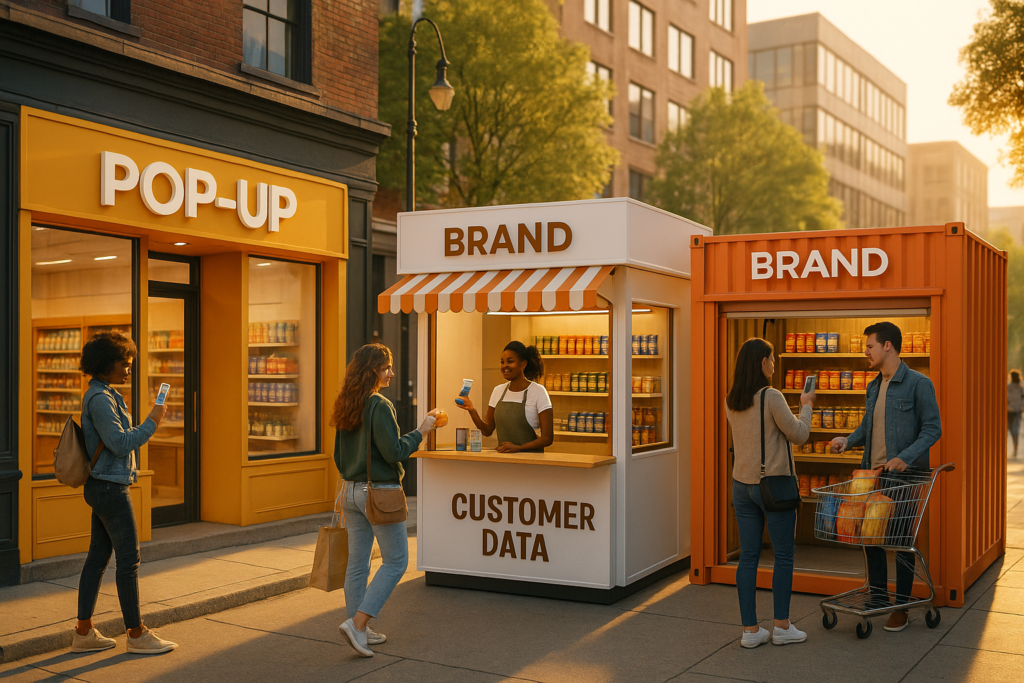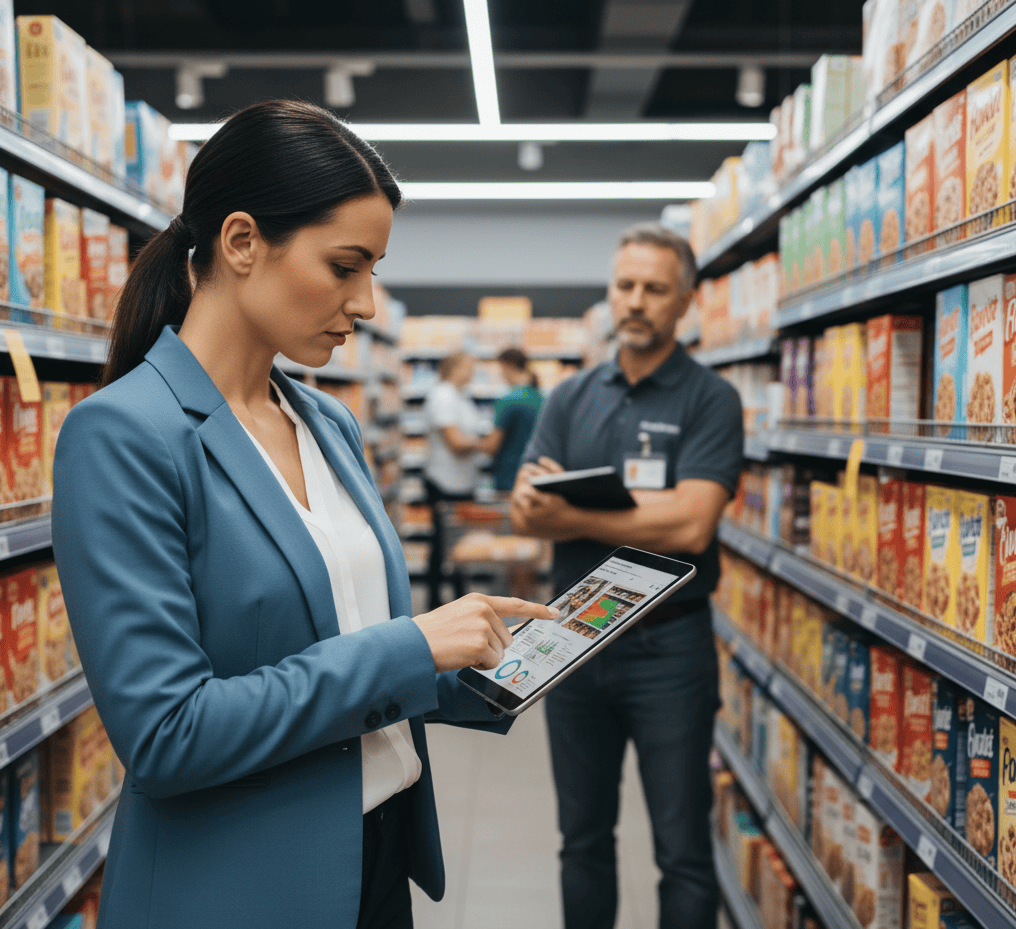“It’s not about opening more stores. It’s about opening the right stores.” That’s our starting point at Yventure. Because here’s the truth: if challenger brands (emerging brands as I call them) jump into expansion without a sharp strategy, you end up with empty storefronts and wasted capital.
Let’s break down a checklist on how to do it right.
1. Start with Market Intelligence, Not Location
Have you ever pitched yourself a perfect store location until the numbers didn’t support it?
GeoIQ highlights that expansion begins with understanding your existing market. Focus on customer data, foot traffic, competition and only then hunt for space. We do the same. We help brands be smart about expansion, a customer-first, data-backed way.
Most brands still rely too heavily on gut instinct or retail real estate brokers with generic advice. But winning brands use precision targeting. Before signing a lease or a contract with a retailer, ask: do we have demand density here? Are our core customers shopping here? Can we tap into existing behavior instead of trying to create it from scratch?
2. Choose Agility Over Scale
Forbes and MG2 both flagged a rising retail shift: smaller formats, shorter leases, faster speed.
Yes, storefronts still matter and so do flexibility and adaptability. We help you pilot fast, learn fast, then expand when it makes sense.
Opening market at 10 stores in one quarter might look good in a press release. But what if 6 of them underperform? What if 3 cannibalize your own sales? A better path is testing formats that let you fail fast and recover faster, pilot pop-ups, mobile kiosks, or modular shop-in-shop setups that flex with demand.
Agile expansion isn’t timid. It’s calculated. And in 2025, retailers that embrace this speed and modularity are the ones thriving while others downsize.
3. Think Holistically: Digital and Physical
Deloitte shows top-performing retailers pair real-world store growth with online or DTC channels. At Yventure, we treat your brand ecosystem as one unit. Whether you optimize Amazon, DTC, retail shelves, or foodservice, every path connects back to your strategy and your brand identity.
The days of treating digital and physical as separate silos are over. What happens on your Shopify store should inform your retail packaging. What performs well on Instagram should guide your in-store experience. These feedback loops drive faster innovation and lower risk.
Some of the fastest-growing CPG brands in 2025 are winning because they’ve built marketing flywheels across platforms. A TikTok recipe sparks a trial, DTC fulfills it, retail validates it, and data feeds back into product decisions. That’s true omnichannel thinking and it starts with planning expansion across the full funnel.
4. Drive Local, Standardize Central
Lightspeed recommends a tactical mix: local partnerships, in-store events, and smart loyalty funnels. We approach expansion with that same dual view: deep local engagement, tight brand alignment, consistent execution at scale.
A customer in Denver might discover you at a local food truck fest. One in Brooklyn might find you through a neighborhood co-op. But both should walk away with the same emotional impression of your brand. That’s where standardized training, assets, and systems come in.
The most successful expansion brands don’t just plug into communities, they build bridges. Partner with local causes. Empower your store managers to tailor their space while keeping brand consistency tight. When done right, your store feels native to the neighborhood while remaining unmistakably yours.
5. Turn Obstacles Into Advantages
CBRE points out rising rent and limited real estate can be roadblocks. But we view them as opportunities. Think pop-ups, repurposed spaces, shop-in-shop models. We build creativity into your expansion so your brand wins for speed and innovation.
These places often have less competition and faster setup times. It’s not about looking polished. It’s about being present where your audience actually is.

Creativity isn’t just a brand trait, it’s a survival skill. The more inventive your retail approach, the more options you have when traditional channels get saturated or expensive. That flexibility pays off, especially when scaling quickly.
The Bottom Line: Go Slower to Go Smarter
Retail expansion in 2025 isn’t a land grab. It’s a chess game. Smart wellness and F&B brands aren’t just chasing square footage, they’re chasing relevance, resonance, and return. If you lead with focus instead of frenzy, each new location where you launch your brand becomes more than a storefront. It becomes a strategic node in a living, growing ecosystem. Whether you’re opening store #2 or store #22, the same rule applies: build with intention, expand with purpose, and let strategy lead the way.
So why does Yventure work?
- We launch strategy and pilot execution in 30 days—before real estate costs or hiring delays.
- We help you test multiple formats—pop-ups, kiosks, micro-stores—before doubling down.
- We unify your footprint—retail, DTC, digital and foodservice—into a single, ROI-driven roadmap.
- We always ground decisions in real-time data and ROI clarity.
- We balance consistent brand experience with smart local activation.
The fastest-growing Wellness and F&B brands don’t open stores first, they define strategy first.
They don’t just occupy shelf space, they earn influence.
They don’t just plant doors, they cultivate communities.
Thinking about expansion?
Stop Wasting Your Budget
The food and beverage industry doesn’t wait for perfect marketing strategies. Your competitors aren’t paralyzed by this decision—they’re already capturing market share while you debate options.
Make an informed decision quickly. Measure results consistently. Adjust based on data, not emotions.
The $75K you spend this year will either accelerate your growth or subsidize your competitors’ success. Choose wisely.



